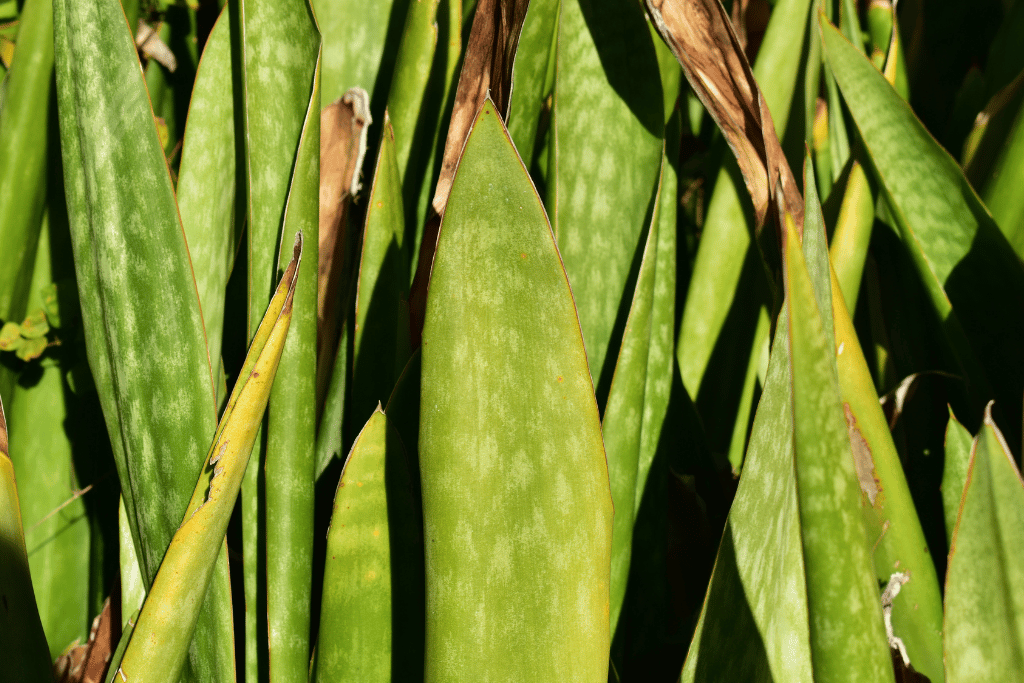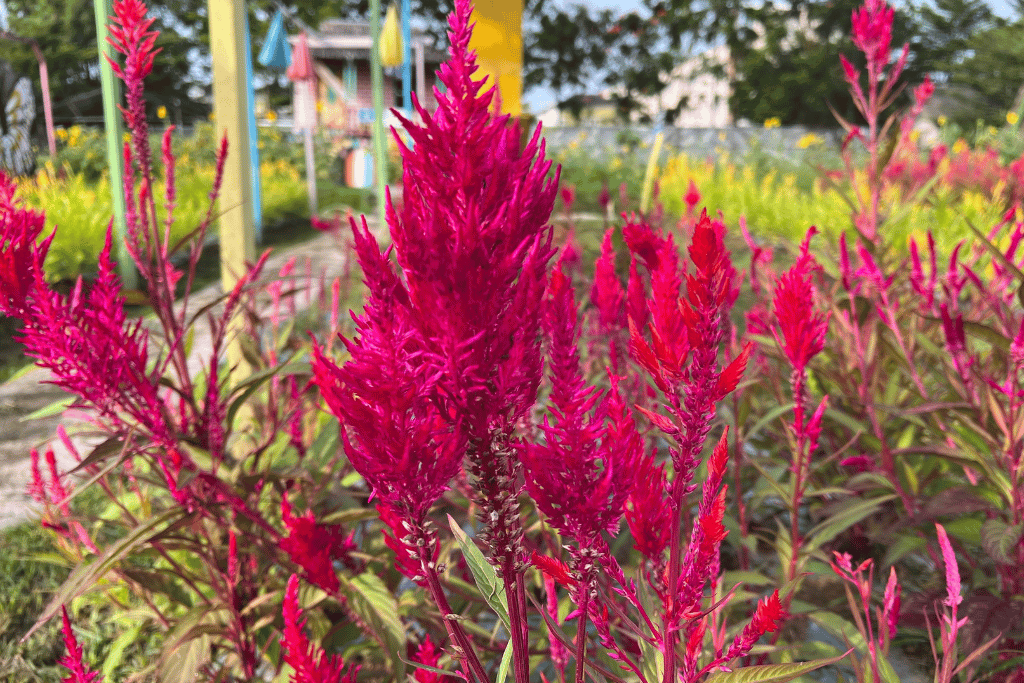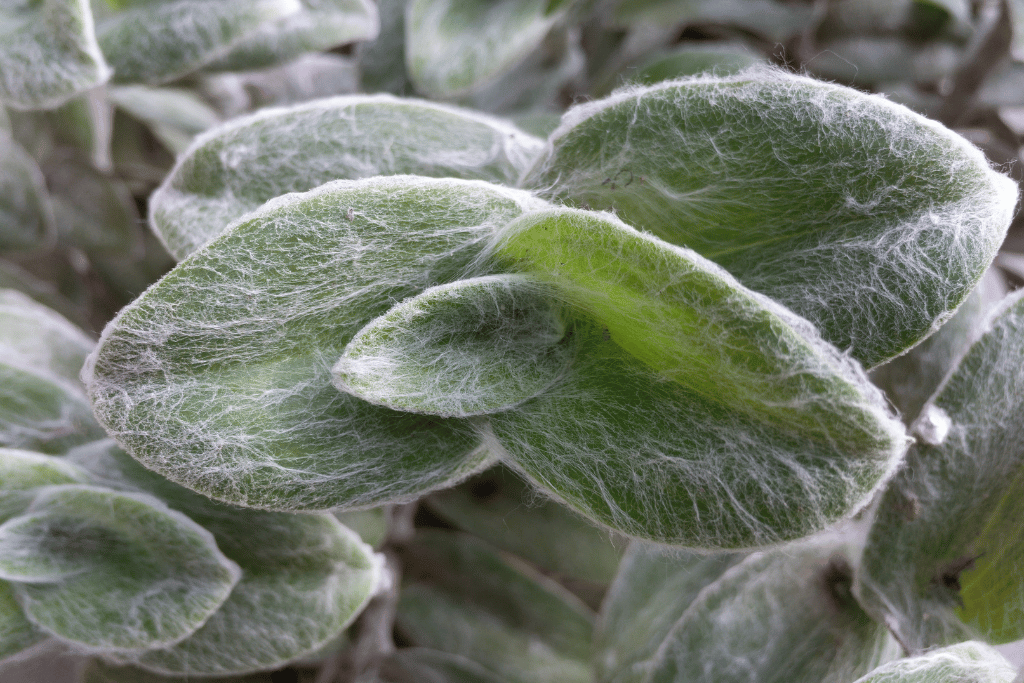
If you’re looking to snag an adorable new plant to add a touch of quirkiness to your collection, look no further than the baby bunny bellies plant. This cute little succulent is taking the gardening world by storm, and it’s not hard to see why. With its chubby leaves and fuzzy appearance, Baby bunny bellies is a real head-turner.
You might be wondering what the heck is, baby bunny bellies. And how does it get such a fun name? The leaves of this plant are soft and furry to the touch, just like a baby bunny’s belly. I mean, who doesn’t want a plant that’s as adorable as it is easy to care for?
I added one of these to my indoor jungle a few years ago, and it thrives in bright indirect light and isn’t too picky with its soil preferences; this makes it one of the least demanding plants I own.
After grasping a good understanding of this plant’s needs over the years, I am more than happy to share my insight with you.
So, sit tight, relax, and enjoy reaping the information on one of the most adorable plants around!
About the Baby Bunny Bellies Plant
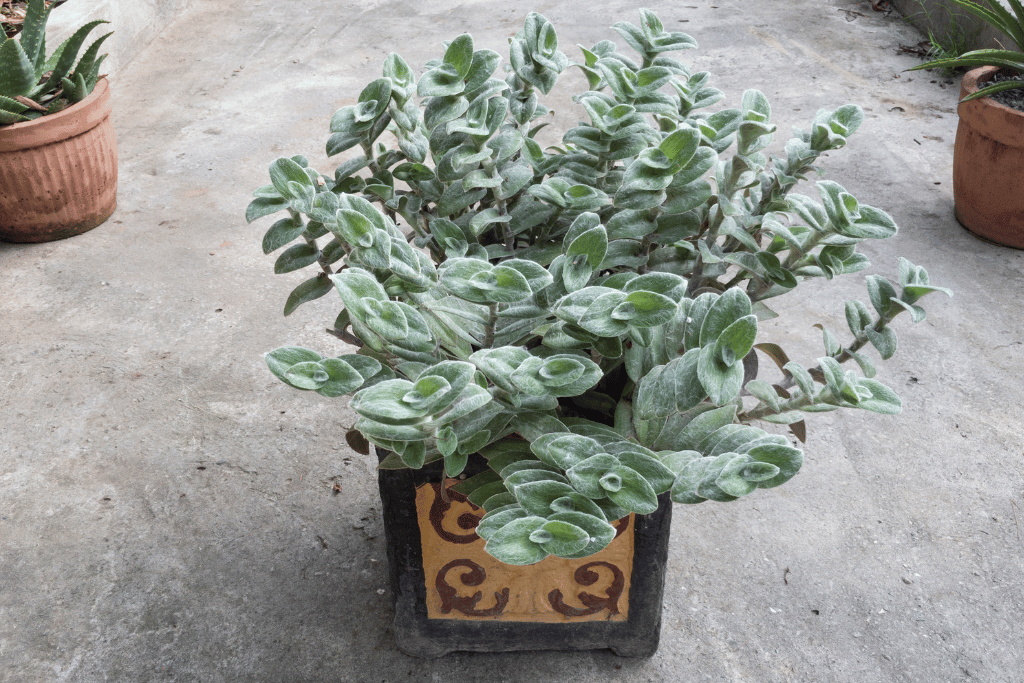
Tradescantia chrysophylla, also known as baby bunny bellies or cobweb spiderwort, is a herbaceous perennial plant that belongs to the Commelinaceae family. This species is native to Mexico, specifically the states of Oaxaca, Puebla, and Veracruz. It has also been introduced in other parts of the world, such as the united states and New Zealand, where it has become naturalized.
Tradescantia chrysophylla has been used traditionally by the Aztecs and other indigenous groups in Mexico for medicinal purposes. Its leaves and stems are believed to have antiseptic and anti-inflammatory properties and are used to treat wounds, infections, and digestive issues.
In terms of physical characteristics, baby bunny bellies grow up to 15 inches (40cm) tall and 11 inches (30cm) wide, with long, narrow green leaves that have a prominent purple hue on the undersides of the leaves.
It produces small, three-petaled purple flowers that bloom in clusters on long stems. It’s a hardy plant that can grow in a variety of conditions, from full sun to partial shade, and is resistant to pests and diseases.
In addition to their medicinal properties, baby bunny bellies are also commonly used in horticulture and landscaping due to their attractive foliage and hardiness.
It is often planted in borders, rock gardens, and containers and can be used as a ground cover or to provide a splash of color in mixed plantings.
Baby Bunny Bellies Care

Light
When it comes to the light requirements of the Tradescantia chrysophylla, it prefers bright indirect light. While it can tolerate some direct sunlight, too much can scorch its delicate leaves.
A good rule of thumb is to provide it with at least 4-6 hours of bright indirect light daily. You can place it near a north or east-facing window or by using a sheer curtain to diffuse the sunlight.
If the plant is not getting enough light, its leaves may become pale or lose their vibrant color. On the other hand, if it’s getting too much light, its leaves may become yellow or brown and appear burned.
I mistakenly placed it in direct sunlight once, and let’s just say it wasn’t a pretty sight. The leaves got crispy and brown, and I had to nurse them back to health with some extra TLC.
Watering
The baby bunny bellies plant likes to be kept in moist but not soggy soil. You want to give it a good drink of water when the top inch of soil is dry to the touch, but be careful not to overdo it. Nobody likes a drowned bunny, right?!
When watering the baby bunny bellies plant, make sure you let the excess water drain out of the pot’s drainage holes. This ensures the entire root ball is moistened. Be sure to empty the excess water from the saucer beneath the pot after watering to prevent the plant from sitting in standing water, which can lead to root rot.
It’s a good idea to use room-temperature filtered or distilled water when possible. This will avoid any compounds that may be in the tap water that can damage the plant over time.
Soil

One of the great aspects of the baby bunny bellies plant is how it can thrive in some of the most basic soil substrates. It prefers well-draining soil that’s rich in organic matter.
The Tradescantia chrysophylla does well in slightly acidic soil with a pH range between 5.5 to 6.5. You can test the pH level of your soil with a soil test kit available at most garden stores. Most standard all-purpose potting mixes will already have this pH range, so if you are using potting mix straight from the bag, there should be no need to make any adjustments.
You can create your own soil mix with a few basic supplies. Here are a few simple steps to follow to create a chunky, lightweight mix:
- 1-part peat moss
- ¼-part perlite
- ½-part vermiculite
- 1-part potting mix
You can use anything to measure the parts based on the size of the container you need to fill. For example, with one scoop of potting mix with a trowel, use 1/4 scoop of perlite. Simple!
Temperature
On to the topic of temperature. This plant is pretty adaptable and can tolerate a range of temperatures, but it prefers to be in a warm and humid environment. Ideally, the baby bunny bellies plant should be kept at 60-75F (15-24C).
Try to avoid extreme temperatures, such as those caused by drafty windows or air vents. These fluctuations in temperature can stress the plant and lead to stunted growth or even death. You can monitor your home’s temperature with a thermometer and make adjustments as necessary.
Humidity

Another great factor about the baby bunny bellies is that it’s happy in moderate humidity levels, so you don’t need to turn your home into a sauna to keep it alive!
As with most plants, the humidity can encourage vigorous growth, so there are some simple ways to control and increase the humidity if you want:
- Mist regularly: Mist your plant with a spray bottle filled with room temperature water to increase humidity levels. The aim is to mist the leaves and the air around the plant but to avoid getting water on the soil to prevent overwatering.
- Group plants together: Grouping plants together can help to create a microclimate with higher humidity levels. This is especially effective in smaller rooms or enclosed spaces.
- Use a humidifier: A humidifier can help increase humidity levels in your home. Place the humidifier near your plant or in the same room to benefit all your plants.
- Place a tray of water nearby: Place a tray of water near your plant, and as the water evaporates, it will increase the humidity levels around the plant.
I invested in a small humidifier for my plants; it’s been a lifesaver, especially in the winter when the weather turns dry and I turn the heaters on. Humidifiers are not only great for your plants but also provide us with some amazing health benefits.
Fertilizer
Baby bunny bellies is not a heavy-feeding plant, but it does benefit from regular fertilization during the growing season, typically in the spring and summer. When fertilizing the Tradescantia chrysophylla, use a balanced fertilizer with equal proportions of nitrogen, phosphorus, and potassium. The 10-10-10 or 20-20-20 formula is great and will provide your plant with the necessary nutrients for healthy growth.
Dilute the fertilizer to half the recommended strength to avoid over-fertilizing your plant. If you’re unsure, follow the directions on the packet for the correct dilution rate. When it’s time to apply the fertilizer, try not to let it come into contact with the leaves or stems; this can cause the plant’s tissue to burn.
Fertilize your baby bunny bellies plant once a month during the growing season (spring and summer). This will ensure a steady supply of nutrients. Keep an eye on your plants’ growth and make adjustments as necessary. For example, if your plant’s leaves have begun to look pale, it may be a sign of nutrient deficiency.
In contrast, if the leaves have started to brown at the tips, it can be a sign of overfertilizing. Overfertilization can be corrected by flushing the soil or repotting the plant. It may be easier on smaller plants, but large plants can be a nightmare to recover.
Common Pests and Diseases

Although Tradescantia chrysophylla is a relatively hardy plant, it can be susceptible to a few pests and diseases. Here are some common ones to watch out for:
Spider Mites
These tiny insects can infest the plant and suck the sap from the leaves, causing them to turn yellow and eventually die. You may identify these by fine webbing around the leaves and yellow or brown spots appearing on the leaves. You can treat a spider mite infestation by using a neem oil spray or insecticidal soap solution.
Whiteflies
These are tiny white insects that can be found on the undersides of the leaves and can cause yellowing and curling of the leaves. Whiteflies can be treated with an insecticidal soap solution in a spray bottle or a mix of neem oil dishwashing detergent and water.
Mealybugs
These small, white, cottony insects can be found on the leaves and stems and can weaken the plant by feeding on its sap. They usually move around in clusters on the plant’s leaves and stems. You can use a cotton swab dipped in rubbing alcohol to remove them one by one.
Root Rot
Overwatering or poor drainage can cause the roots of the Tradescantia chrysophylla plant to rot, leading to yellowing and wilting of the leaves. To prevent root rot, allow the soil to dry out slightly between waterings and ensure the pot has proper drainage.
Leaf Spot
Leaf spot is a fungal disease that causes brown or black spots on the leaves. To prevent leaf spots, avoid getting the leaves wet when watering, and make sure the plant has good air circulation.
Propagating Baby Bunny Bellies
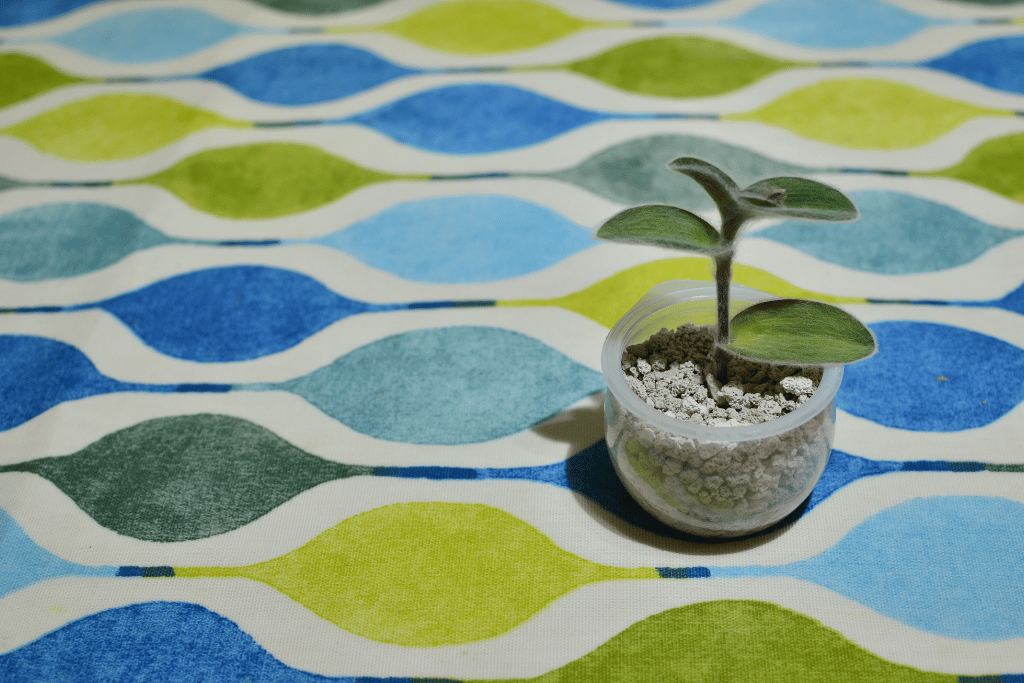
If you’re like me, you can never have too many baby bunny bellies plants. Luckily, propagating Tradescantia chrysophylla is a cinch.
Firstly, why propagate? Well, for starters, it’s a great way to expand your collection without having to spend a fortune. Plus, it’s always fun to share plants with friends and family. And let’s not forget the satisfaction that comes with growing a new plant from scratch.
Stem Cuttings
One popular method of propagating baby bunny bellies is via cuttings.
To do this, simply take a stem cutting that’s a few inches long.
Selecting the right cutting is key. You want to look for a stem that has a few sets of leaves. Don’t worry if it’s not too long; a few inches will do the trick. And if you can, try to choose a stem that doesn’t have any flowers or buds on it. This will help it focus its energy on growing roots.
Use a clean pair of scissors or pruning shears to cut the stem just below a set of leaves. Remove any leaves from the bottom few inches of the stem, leaving a few sets of leaves at the top.
If you’re feeling fancy, you can dip the end of the stem in a rooting hormone to help it along.
Now it’s time to plant the cutting.
Fill a small pot with moist soil and use a pencil or chopstick to make a hole in the soil. Insert the stem into the hole, making sure that the bottom few inches are covered with soil.
Gently press the soil around the stem to secure it in place.
Place the cutting in the same spot as the mother plant to ensure it is getting the same growing conditions.
Division
Another method of propagation is division. This works best if you have a larger plant that you’d like to split up. Gently remove the plant from its pot and separate the stems and roots into smaller clumps. Plant each clump in its own pot and care for them as you did with the mother plant.
You can propagate baby bunny bellies from seeds. However, remember that this method can be a bit trickier and requires much more patience. You’ll need to collect the seeds once they’ve ripened, sow them in a pot of moist soil, and wait for them to germinate.
But hey, if you’re up for a challenge, then go for it!
In my experience, propagating this plant via cuttings is the easiest and most reliable method. Plus, it’s a great way to share the love with your fellow plant lovers
Discovering the Beauty and Resilience of Tradescantia chrysophylla
The baby bunny bellies plant is a delightful addition to any plant collection.
It’s a laid-back plant when it comes to maintenance and is super easy to propagate. You can multiply your collection without paying a cent!
I’ve had a blast sharing my personal experiences and tips on this fuzzy little plant with you. I can attest to the joy that comes from watching a young cutting grow into a thriving, mature plant. And the Baby Bunny Bellies plant is no exception. Its furry leaves and delicate flowers are sure to bring a smile to your face.
Don’t Let Your Plants Go Belly Up- Hop on Board With Our Plant Care Tips and Tricks!
Our website is well-equipped with all the tools you need to keep your plants looking sleek. From watering hacks to pruning techniques, we’ve got it all!
So whether you’re just getting started or you’ve been in the plant game all your life, head on over to our planting 101 pages and turn your green game from zero to here!


